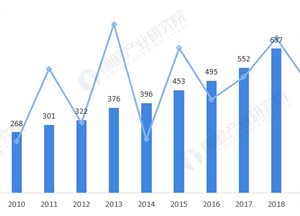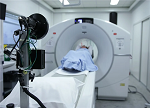经典高分文献阅读·术后疼痛和年龄:回顾性队列关联研究
经典高分文献阅读·术后疼痛和年龄:回顾性队列关联研究
Postoperative Pain and Age: A Retrospective Cohort Association Study
术后疼痛和年龄:回顾性队列关联研究

#EDITOR’S PERSPECTIVE
Editor’s Perspective
What We Already Know about This Topic
√ Worldwide populations are aging, leading to larger numbers of elderly patients receiving surgery
√ Reports of associations between age and postoperative pain have been conflicting
我们已经知道的关于这个话题
? 全球人口老龄化,导致接受手术的老年患者人数增加
? 关于年龄与术后疼痛之间关联的报道相互矛盾
What This Article Tells Us That Is New
√ Data from the PAIN OUT registry involving more than 11,000 patients undergoing spinal surgery, joint replacement, and laparoscopic cholecystectomy were used in a retrospective cohort analysis
√ Pain reported postoperative day 1 declined slightly with age
ü Severe postoperative pain was prevalent regardless of age or surgical type
这篇文章告诉我们什么是新的
? 来自 PAIN OUT 登记的数据涉及超过 11,000 名接受脊柱手术、关节置换和腹腔镜胆囊切除术的患者,用于回顾性队列分析
? 术后第1天报告的疼痛随着年龄的增长而略有下降
? 无论年龄或手术类型如何,严重的术后疼痛普遍存在
ABSRACT
Background
As the population ages, the number of elderly people undergoing surgery increases. Literature on the incidence and intensity of postoperative pain in the elderly is conflicting. This study examines associations between age and pain-related patient reported outcomes and perioperative pain management in a dataset of surgical patients undergoing four common surgeries: spinal surgery, hip or knee replacement, or laparoscopic cholecystectomy. Based on the authors’ clinical experience, they hypothesize that pain scores are lower in older patients.
背景
随着人口老龄化,接受手术的老年人数量增加。关于老年人术后疼痛发生率和强度的文献存在矛盾。本研究在接受四种常见手术的外科患者数据集中检查年龄和与疼痛相关的患者报告的结果和围手术期疼痛管理之间的关联:脊柱手术、髋关节或膝关节置换术或腹腔镜胆囊切除术。根据作者的临床经验,他们假设老年患者的疼痛评分较低。
Methods
In this retrospective cohort, study data were collected between 2010 and 2018 as part of the international PAIN OUT program. Patients filled out the International Pain Outcomes Questionnaire on postoperative day 1.
方法
在这个回顾性队列中,作为国际 PAIN OUT 计划的一部分,在 2010 年至 2018 年间收集了研究数据。患者在术后第 1 天填写了国际疼痛结果问卷。
Results
A total of 11,510 patients from 26 countries, 59% female, with a mean age of 62 yr, underwent one of the aforementioned types of surgery. Large variation was detected within each age group for worst pain, yet for each surgical procedure, mean scores decreased significantly with age (mean Numeric Rating Scale range, 6.3 to 7.3; β = –0.2 per decade; P ≤ 0.001), representing a decrease of 1.3 Numeric Rating Scale points across a lifespan. The interference of pain with activities in bed, sleep, breathing deeply or coughing, nausea, drowsiness, anxiety, helplessness, opioid administration on the ward, and wish for more pain treatment also decreases with age for two or more of the procedures. Across the procedures, patients reported being in severe pain on postoperative day one 26 to 38% of the time, and pain interfered moderately to severely with movement.
结果
来自 26 个国家的 11,510 名患者(59% 为女性,平均年龄为 62 岁)接受了上述类型的手术之一。在每个年龄组中检测到最严重疼痛的差异很大,但对于每个外科手术,平均分数随着年龄的增长而显着下降(平均数字评定量表范围,6.3 至 7.3;β = –0.2/每十年;P≤ 0.001),表示在整个生命周期中数字评分减少了 1.3 。疼痛对床上活动、睡眠、深呼吸或咳嗽的干扰、恶心、嗜睡、焦虑、无助、病房服用阿片类药物以及希望进行更多的疼痛治疗也随着年龄的增长而减少。在整个手术过程中,患者报告在术后第一天有 26% 到 38% 的时间出现剧烈疼痛,并且疼痛会中度至重度影响运动。
Conclusions
The authors’ findings indicate that postoperative pain decreases with increasing age. The change is, however, small and of questionable clinical significance. Additionally, there are still too many patients, at any age, undergoing common surgeries who suffer from moderate to severe pain, which interferes with function, supporting the need for tailoring care to the individual patient.
结论
作者的研究结果表明,术后疼痛随着年龄的增长而减轻。然而,这种变化很小,临床意义值得怀疑。此外,仍然有太多的患者,在任何年龄,都在接受普通手术,他们遭受中度至重度疼痛,这会干扰功能,从而支持为个体患者量身定制护理的需要。
部分结果解读:
该研究最后共纳入11510例患者,其中3941例患者行髋关节置换术,3691例患者行膝关节置换术,2894例患者行腹腔镜胆囊切除术,984例患者行脊柱融合术。接受脊柱融合术的患者术后疼痛最严重,疼痛对于其在床上活动、睡眠和下地活动的干扰最明显,患者对自身焦虑和无助感的评分也最高。腹腔镜胆囊切除术患者的术后疼痛评分在深呼吸或咳嗽时最高。
对于此研究的4种手术来说,最大疼痛评分随年龄的增加而显著降低,入院前已经在使用阿片类药物和女性患者的最严重疼痛评分较高。除髋关节置换术外,其余3种手术的患者若术前存在慢性疼痛,则疼痛评分较高。散点图显示,在腹腔镜胆囊切除术和膝关节置换术后患者的最严重疼痛评分稳定在70岁左右时,所有4种手术类型的最严重疼痛评分均与年龄相关(图 1)。

图1:术后最差疼痛评分与年龄之间的关联。
用于( A)脊柱手术,(B)髋关节置换术的女性(红色)和男性(蓝色)患者的最严重疼痛评分( y 轴)和年龄(x 轴)的数字评定量表以及局部估计的散点图平滑, ( C ) 膝关节置换术,和 ( D ) 腹腔镜胆囊切除术。为了改善数据可视化,应用了抖动技术。

图2:疼痛干扰与年龄之间的关联。
(A和B )最差疼痛评分(红色)和在床上移动时疼痛(蓝色;y 轴)和年龄(x 轴)的数字评定量表,局部估计散点图平滑用于(A)膝关节置换和(B)腹腔镜胆囊切除术。( C ) 最差疼痛评分(红色)和呼吸时疼痛(蓝色;y 轴)和年龄(x 轴)的数字评定量表) 用局部估计的散点图平滑处理腹腔镜胆囊切除术。为了改善数据可视化,应用了抖动技术
疼痛对术后床上活动、睡眠、深呼吸或咳嗽、恶心、焦虑和无助感的干扰随年龄增长而显著降低。除了膝关节置换术外,其他手术类型的术后疼痛对床上活动干扰的散点图呈现了类似的随年龄下降趋势(图2A、B)。此外,腹腔镜胆囊切除术的最严重疼痛评分和呼吸疼痛也有类似的与年龄相关的下降(图 2C)。相对于65岁以下年轻患者,≥65岁的老年患者术后阿片类药物使用频率更低,在非腹腔镜下胆囊切除术后较少希望更多的疼痛治疗。年龄对疼痛的影响是多因素的。随着年龄增长,外周感觉通路传导速度逐渐减慢,但临床上观察到老年患者的疼痛时间总和延长,对疼痛的抑制功能降低,增加了慢性疼痛的风险。随年龄变化的激素水平也影响疼痛,有研究提出更年期是报告疼痛评分最高最频繁的时期。
原文标题 : 经典高分文献阅读·术后疼痛和年龄:回顾性队列关联研究

图片新闻
技术文库
最新活动更多
-
7.30-8.1火热报名中>> 全数会2025(第六届)机器人及智能工厂展
-
7月30-31日报名参会>>> 全数会2025中国激光产业高质量发展峰会
-
精彩回顾立即查看>> 【线下论坛】新唐科技2025新品发布会
-
精彩回顾立即查看>> 【在线会议】研华嵌入式核心优势,以Edge AI驱动机器视觉升级
-
精彩回顾立即查看>> OFweek 2025(第十四届)中国机器人产业大会
-
精彩回顾立即查看>> 【在线会议】从直流到高频,材料电特性参数的全面表征与测量
-
10 “意外”的药明康德







 分享
分享












发表评论
请输入评论内容...
请输入评论/评论长度6~500个字
暂无评论
暂无评论